All About ICESat-2-old - Trees around the GLOBE
All About ICESat-2 and Comparing GLOBE Ground-based Tree Height to NASA ICESat-2 Space-based Tree Height Observations
ICESat-2 Elevates Our View of Earth
The NASA Ice, Cloud, and land Elevation Satellite-2 (ICESat-2) launched on September 15, 2018 at 6:02am PDT from the Vandenberg Air Force Base in California, USA. The ICESat-2 satellite uses an on-board laser altimeter system to measure the height of Earth. Measurements of ice sheets, sea ice, trees, bodies of water, mountains are all part of what ICESat-2 measures.
The Ice, Cloud, and Land Elevation Satellite-2, or ICESat-2, will measure the height of a changing Earth, one laser pulse at a time, 10,000 laser pulses a second. Slated for launch in 2018, ICESat-2 will carry a photon-counting laser altimeter that will allow scientists to measure the elevation of ice sheets, glaciers, sea ice and more - all in unprecedented detail.
Our planet's frozen and icy areas, called the cryosphere, are a key focus of NASA's Earth science research. ICESat-2 will help scientists investigate why, and how much, our cryosphere is changing in a warming climate. The satellite will also measure heights across Earth's temperate and tropical regions, and take stock of the vegetation in forests worldwide.
ICESat-2 will provide scientists with height measurements that create a global portrait of Earth’s 3rd dimension, gathering data that can precisely track changes of terrain including glaciers, sea ice, forests and more.
While many of ICESat-2’s discoveries are yet to be imagined, the satellite mission has four science objectives:
- Measure melting ice sheets and investigate how this effects sea level rise,
- Measure and investigate changes in the mass of ice sheets and glaciers,
- Estimate and study sea ice thickness,
- Measure the height of vegetation in forests and other ecosystems worldwide.

Why does this matter to the this Campaign and how can scientists use your data?
Students will be able to compare their ground-based tree height data, as well as the ground-based tree height data from GLOBE Observer citizen scientists, with the space-based ICESat-2 satellite data. All this data can serve as data for student research projects, locally and for the United States SRS and IVSS.
Scientists from the ICESat-2 Mission will periodically review the tree height data collected by the GLOBE community throughout this campaign. The data will allow scientists to compare the GLOBE data to the ICESat-2 data and in potential professional research.
Below you will see a few examples of tree height data comparisons between the GLOBE ground-based tree height observations and the ICESat-2 space-based tree height observations. You can also read more about these comparisons in the recently published paper, "The potential of citizen science data to complement satellite and airborne lidar tree height measurements: lessons from The GLOBE Program."
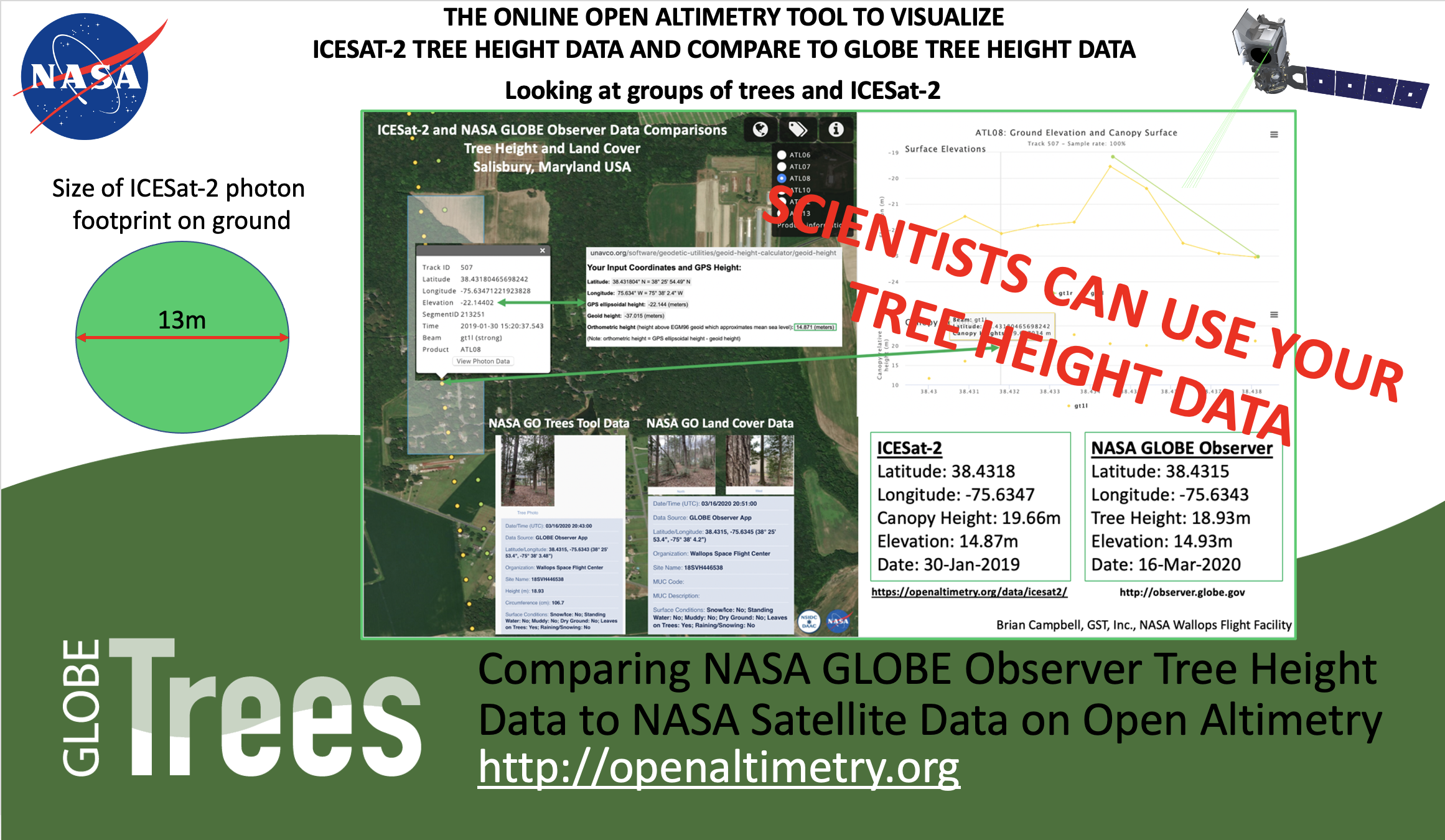
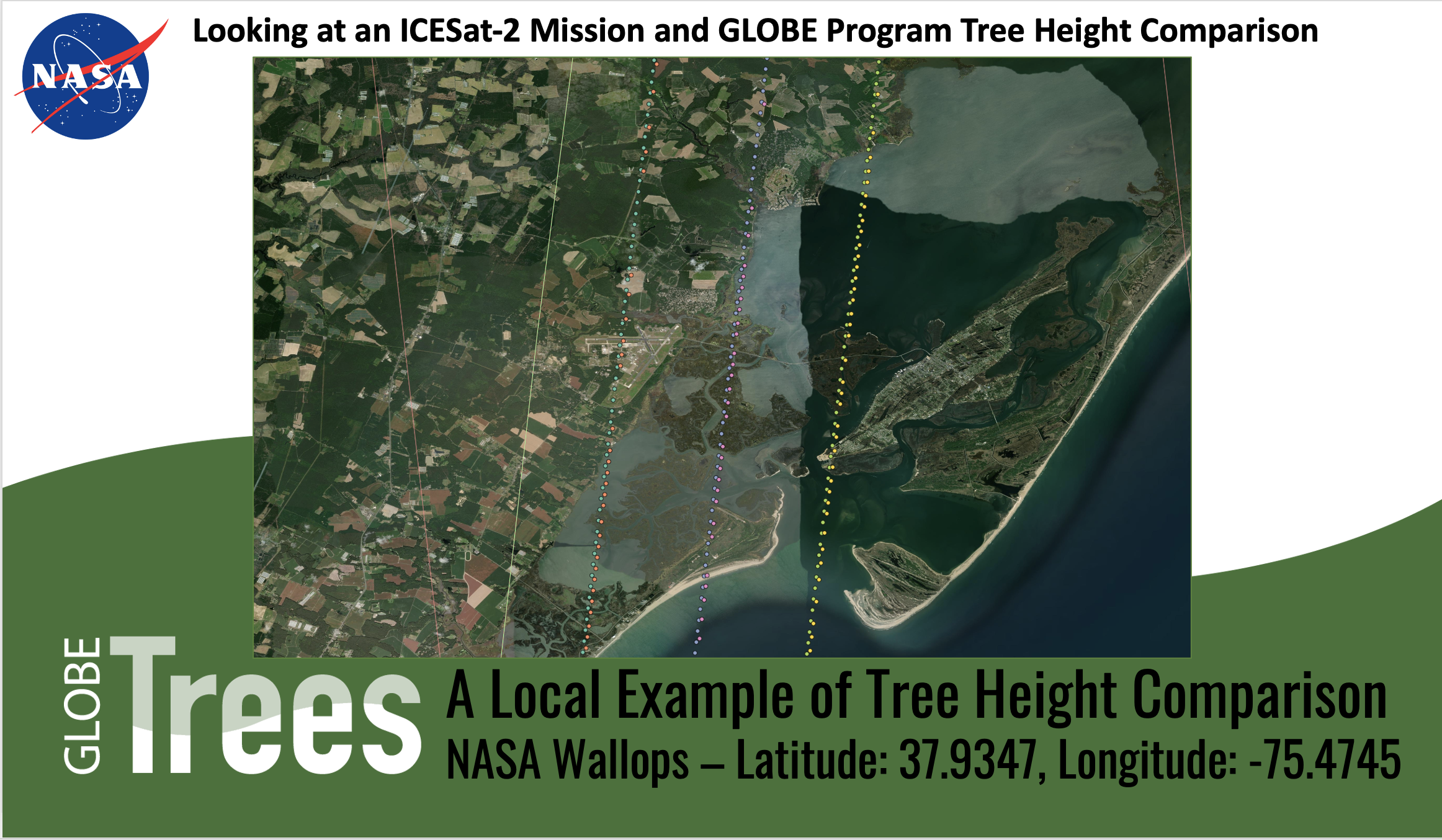
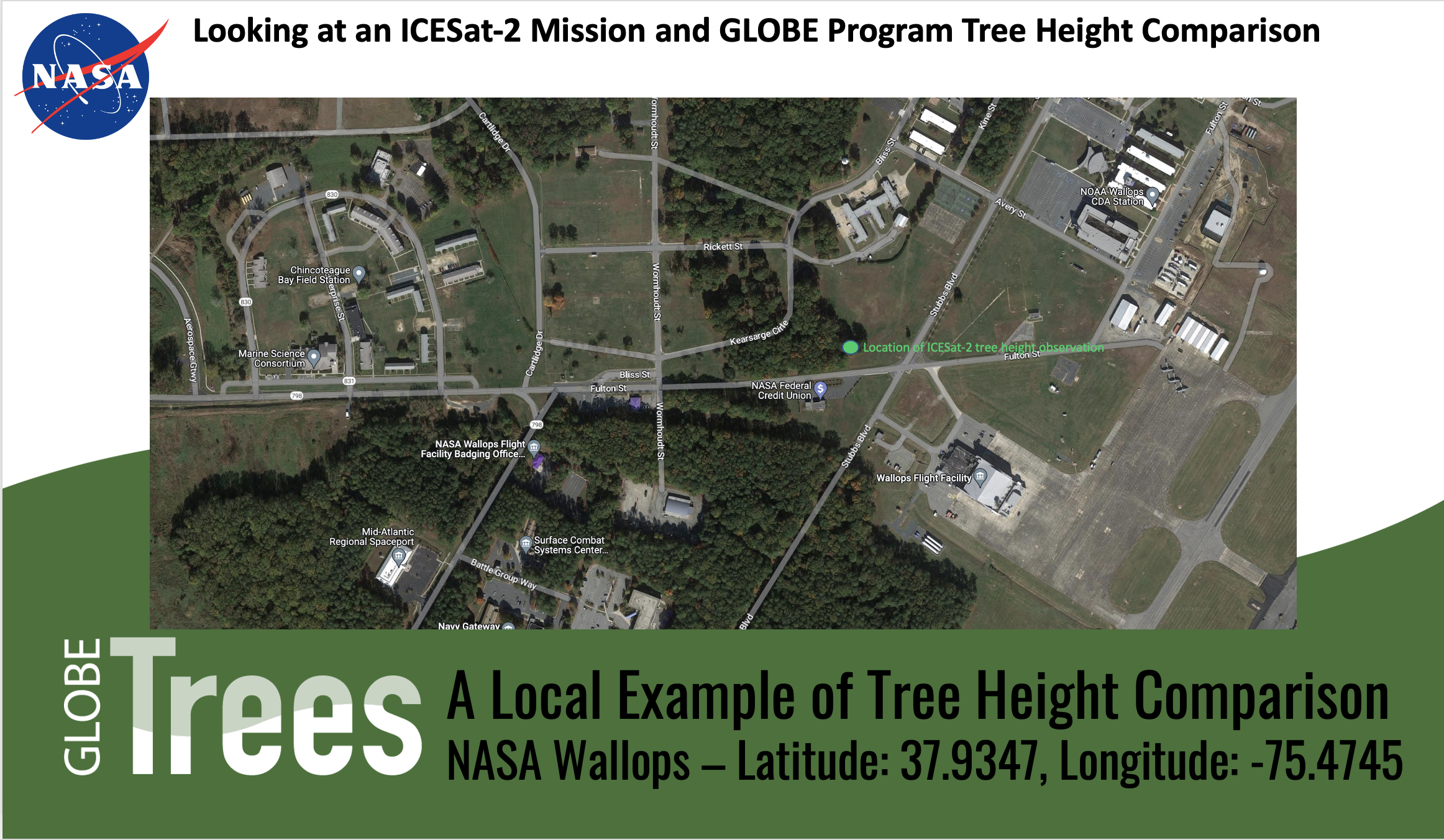
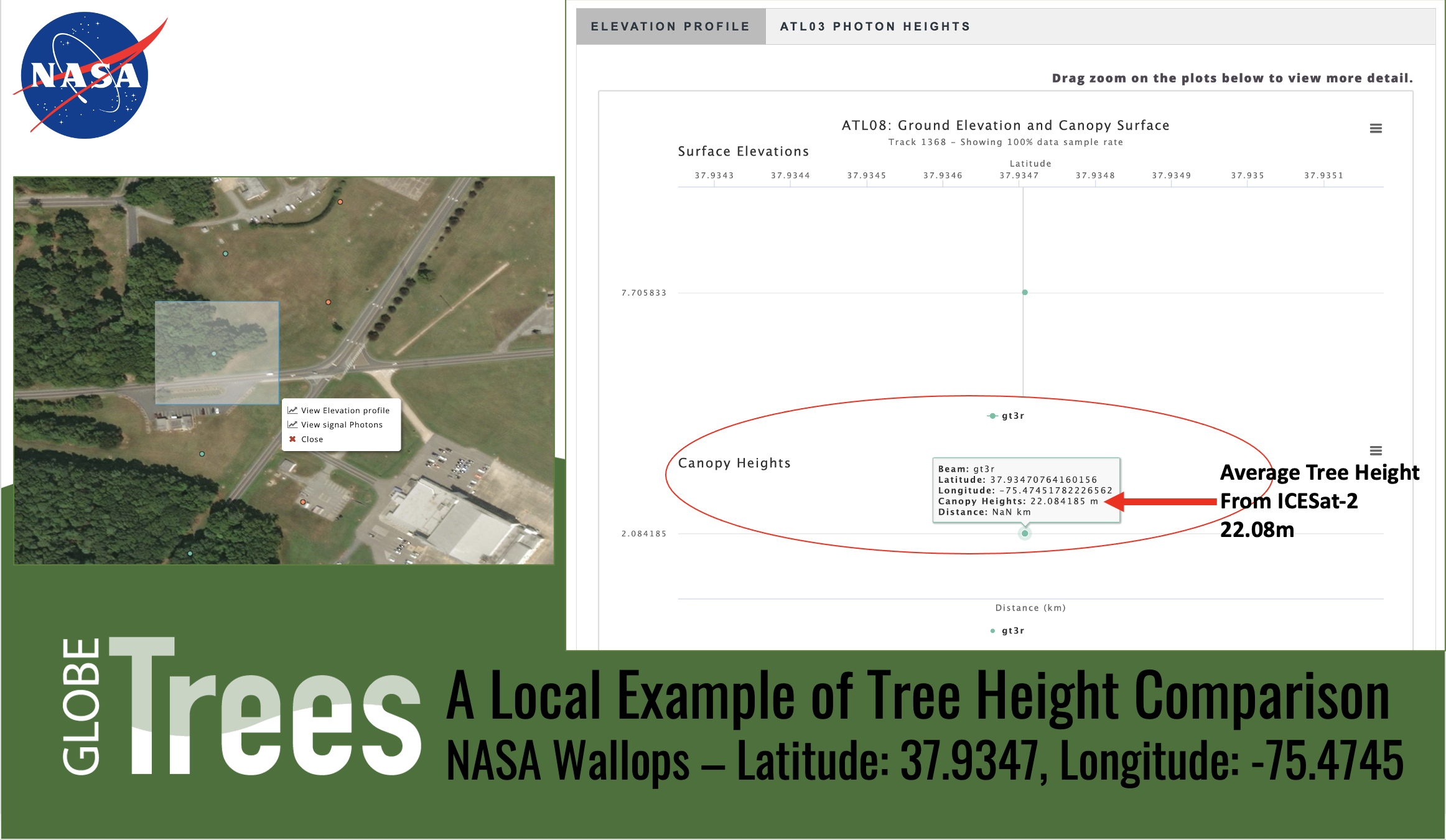
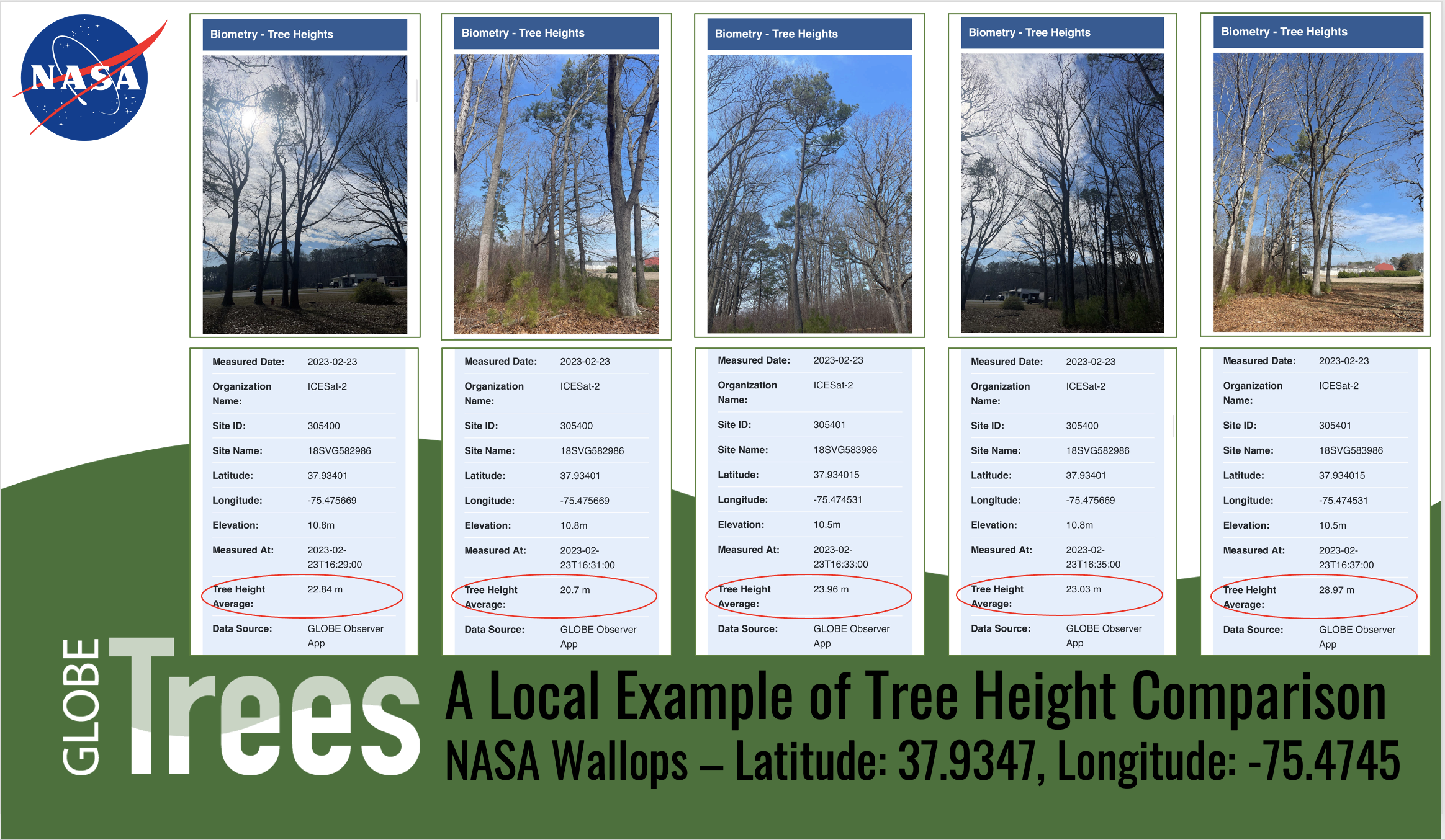
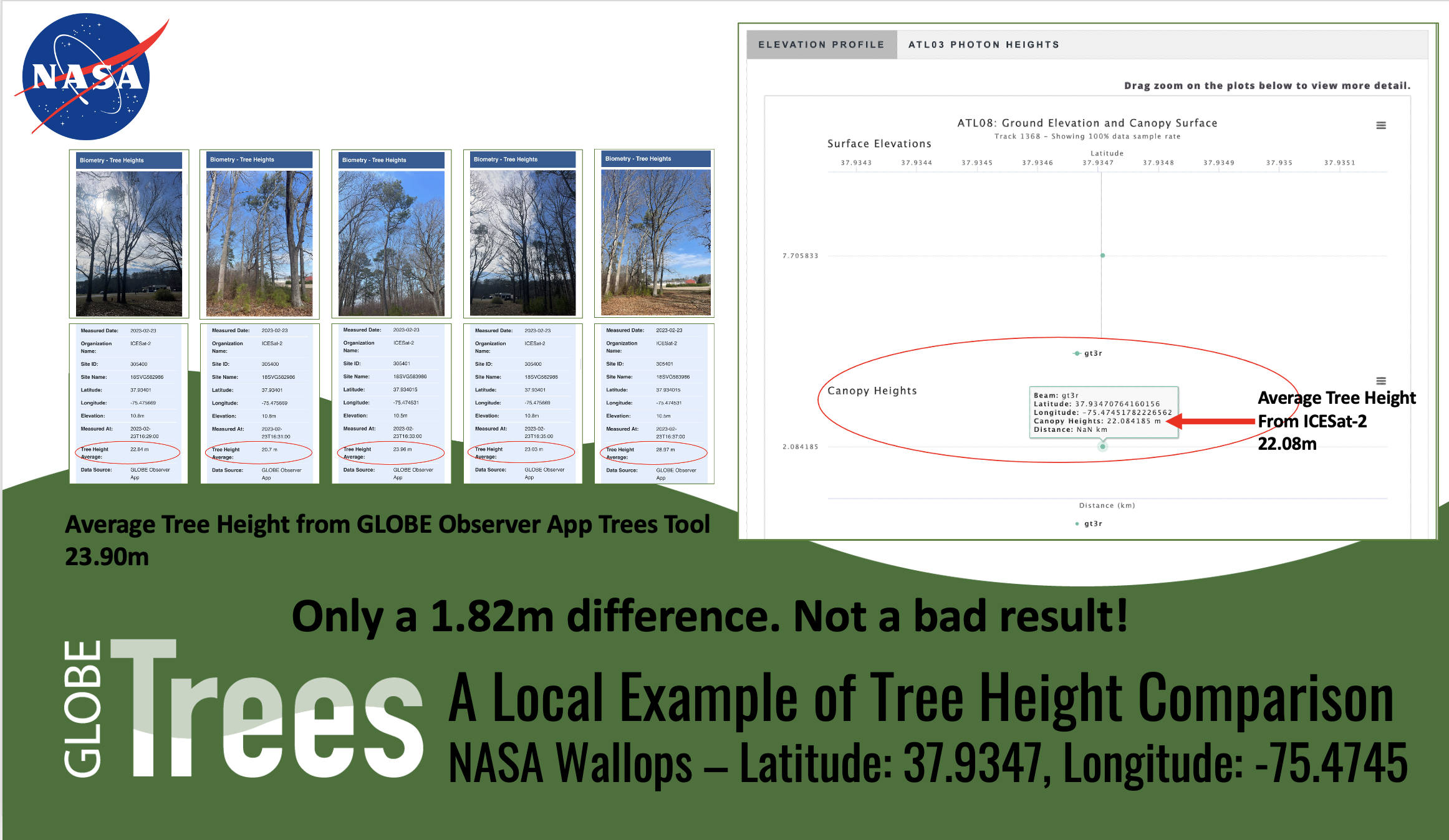
Researchers from students to professional at NASA and beyond can use the GLOBE tree height data observations and compare them to the tree height data from ICESat-2.
GLOBE and Open Altimetry
As part of the Trees Around the GLOBE Student Research Campaign, we want to showcase some great online tools that can assist in data analysis, data visualization, and imagery analysis. Online tools can be used as aides in student research from local to global environments. Comparing ground-based data from GLOBE with satellite and airborne data can serve as an amazing way to focus student research.
ICESat-2 Data on Open Altimetry: OpenAltimetry is a cyberinfrastructure platform for discovery, access, and visualization of data from NASA’s ICESat and ICESat-2 missions. These laser profiling altimeters are being used to measure changes in the topography of Earth’s ice sheets, vegetation canopy structure, and clouds and aerosols. A new paradigm for data access was required to serve the needs of a diverse scientific community seeking to take advantage of these unique observations. OpenAltimetry, which is the product of a collaboration between the National Snow and Ice Data Center (NSIDC), the Scripps Institution of Oceanography and San Diego Supercomputer Center at UC San Diego, was custom-built to meet these needs.
Using the Open Altimetry Tool to Look at ICESat-2 Tree Canopy Heights and Earth Elevations from Space - Amy FitzGerrell, National Snow and Center, Colorado USA
Comparing GLOBE and ICESat-2 Tree Height Data on Open Altimetry - Brian Campbell, NASA WFF and GST, Inc, Virginia USA
GLOBE Visualization System and Open Altimetry - Peder Nelson, Oregon State University, Oregon USA
ICESat and Global Estimates of Forest Canopy Height - Peder Nelson, Oregon State University, Oregon USA
Comparing an Aerial or Satellite Image to GLOBE and ICESat-2 Tree Height Data for Student Research - Brian Campbell, NASA WFF and GST, Inc. Virginia USA
Want to learn even more about the ICESat-2 Satellite, visit http://icesat-2.gsfc.nasa.gov/.





